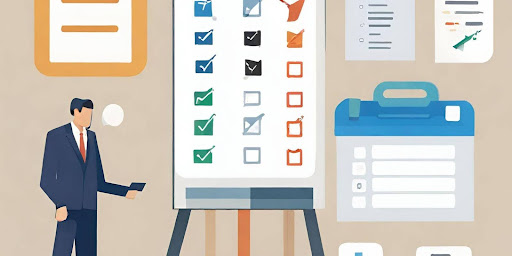
In times of disaster, efficient and well-organized medical billing practices play a crucial role in ensuring that healthcare providers can focus on delivering timely and effective disaster Response situations to those in need. A streamlined billing process not only helps healthcare facilities manage their finances effectively but also contributes to the overall success of disaster response efforts.
Immediate Documentation:
In disaster response situations, immediate and efficient documentation plays a crucial role in facilitating effective coordination, communication, and aid distribution.
Preparation is Key:
a. Create Standard Templates:
Develop standardized templates for various types of documentation, such as incident reports, resource inventory, and victim identification. This ensures consistency and saves time during high-pressure situations.
b. Train Response Teams:
Conduct regular training sessions for response teams on the usage of documentation tools and templates. Familiarity with these resources can significantly enhance efficiency during an emergency.
Utilize Technology:
a. Digital Documentation Platforms:
Implement digital platforms and mobile applications for real-time data collection and reporting. Tools like mobile data collection apps and cloud-based documentation systems facilitate instant sharing and collaboration.
b. Barcode and QR Code Scanning:
Integrate barcode and QR code scanning capabilities to expedite the documentation of resources, victims, and medical records. This technology reduces the margin of error and accelerates data entry.
Centralized Billing Systems:
In today’s fast-paced business environment, efficient financial management is crucial for success.
Key Features and Benefits:
Consolidated Oversight:
Centralized Billing Systems provide a bird’s eye view of all financial activities within an organization. This consolidated oversight allows finance teams to monitor transactions, track payment statuses, and generate comprehensive reports effortlessly. This transparency enhances decision-making by providing real-time insights into the financial health of the business.
Time and Cost Efficiency:
By automating billing processes, organizations can significantly reduce the time and resources spent on manual invoicing and reconciliation. Centralized Billing Systems automate routine tasks, such as invoice generation, payment tracking, and reporting, leading to increased operational efficiency and cost savings.
Improved Accuracy:
Automation minimizes the risk of human error associated with manual data entry. Centralized Billing Systems ensure accuracy in financial transactions, reducing the likelihood of billing discrepancies and financial inaccuracies. This accuracy not only enhances the organization’s credibility but also facilitates compliance with financial regulations.
Clear Coding and Standardization:

In the world of software development, clear coding and standardization play pivotal roles in ensuring that code is not only functional but also maintainable and scalable.
Integration with Emergency Management Systems:
In today’s fast-paced world, effective emergency response is crucial for ensuring the safety and well-being of communities.
Benefits of Integration:
Real-Time Information Sharing:
Integration with EMS enables real-time sharing of critical information. This ensures that all relevant stakeholders, including emergency responders, government agencies, and community organizations, have access to the latest updates, facilitating quicker and more informed decision-making.
Resource Optimization:
Efficient resource allocation is vital during emergencies. Integration allows organizations to share resource availability and needs directly with the EMS. This helps in avoiding redundancies, optimizing resource utilization, and ensuring that aid reaches where it is most needed.
Enhanced Communication:
Seamless communication is the backbone of successful emergency response. Integration with EMS allows for standardized communication protocols, ensuring that information is relayed accurately and consistently across all involved parties.
Mobile Billing Solutions:

In the rapidly evolving landscape of digital commerce, businesses are constantly seeking ways to enhance user experience and streamline transactions.
Benefits of Mobile Billing Solutions:
Convenience for Users:
- Users can make payments with just a few taps on their mobile devices, eliminating the need for credit cards or cash.
- Direct carrier billing allows transactions to be added to a user’s mobile phone bill, making it seamless and hassle-free.
Increased Conversion Rates:
- Streamlined payment processes contribute to higher conversion rates, as users are more likely to complete transactions without friction.
- One-click payments and saved payment details reduce the steps required, enhancing the overall user experience.
Global Accessibility:
- Mobile billing solutions transcend geographical boundaries, allowing businesses to reach a global audience without the limitations of traditional payment methods.
Disaster response often involves mobile healthcare units and makeshift medical facilities. Implementing mobile billing solutions enables healthcare professionals to process transactions on-site, reducing delays associated with transferring paper records or relying on traditional billing methods. This is particularly useful in remote or temporary medical setups.
Transparency in Financial Communication:

The Importance of Transparency:
Building Trust:
Transparent financial communication builds trust by providing stakeholders with a clear understanding of an organization’s financial health. This, in turn, fosters confidence among investors, customers, and employees.
Mitigating Risks:
Open and honest communication about financial challenges allows organizations to address issues proactively. This helps in mitigating risks and avoiding potential crises by demonstrating a commitment to resolving challenges.
Attracting Investors:
Investors seek transparency as it enables them to make informed decisions. By providing a clear picture of financial performance, organizations can attract and retain investors more effectively.
Clear and transparent communication about billing procedures with both patients and staff is essential. This includes providing information on potential out-of-pocket costs, available financial assistance programs, and any temporary billing adjustments made during disaster response efforts. Transparent financial communication fosters trust and reduces confusion among all stakeholders.
Conclusion:
Incorporating these optimized medical billing practices into disaster response situations planning enhances the resilience of healthcare systems, ensuring that financial considerations do not impede the swift and effective delivery of care during crises. By prioritizing efficient billing processes, healthcare providers can contribute to a more coordinated and successful response to disasters, ultimately saving lives and promoting community recovery.
Recent Comments